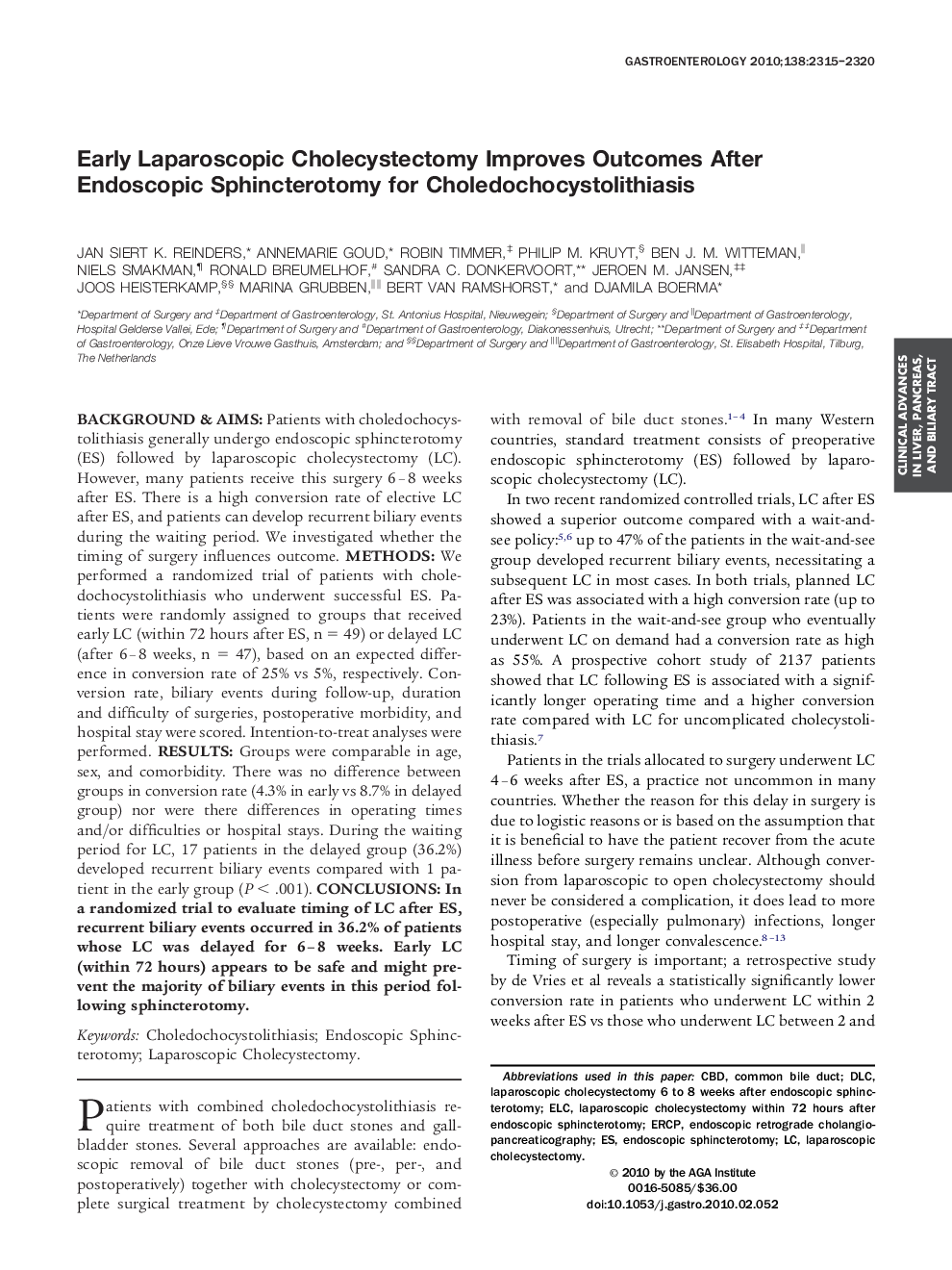| Article ID | Journal | Published Year | Pages | File Type |
|---|---|---|---|---|
| 3296086 | Gastroenterology | 2010 | 6 Pages |
Background & AimsPatients with choledochocystolithiasis generally undergo endoscopic sphincterotomy (ES) followed by laparoscopic cholecystectomy (LC). However, many patients receive this surgery 6–8 weeks after ES. There is a high conversion rate of elective LC after ES, and patients can develop recurrent biliary events during the waiting period. We investigated whether the timing of surgery influences outcome.MethodsWe performed a randomized trial of patients with choledochocystolithiasis who underwent successful ES. Patients were randomly assigned to groups that received early LC (within 72 hours after ES, n = 49) or delayed LC (after 6–8 weeks, n = 47), based on an expected difference in conversion rate of 25% vs 5%, respectively. Conversion rate, biliary events during follow-up, duration and difficulty of surgeries, postoperative morbidity, and hospital stay were scored. Intention-to-treat analyses were performed.ResultsGroups were comparable in age, sex, and comorbidity. There was no difference between groups in conversion rate (4.3% in early vs 8.7% in delayed group) nor were there differences in operating times and/or difficulties or hospital stays. During the waiting period for LC, 17 patients in the delayed group (36.2%) developed recurrent biliary events compared with 1 patient in the early group (P < .001).ConclusionsIn a randomized trial to evaluate timing of LC after ES, recurrent biliary events occurred in 36.2% of patients whose LC was delayed for 6–8 weeks. Early LC (within 72 hours) appears to be safe and might prevent the majority of biliary events in this period following sphincterotomy.
